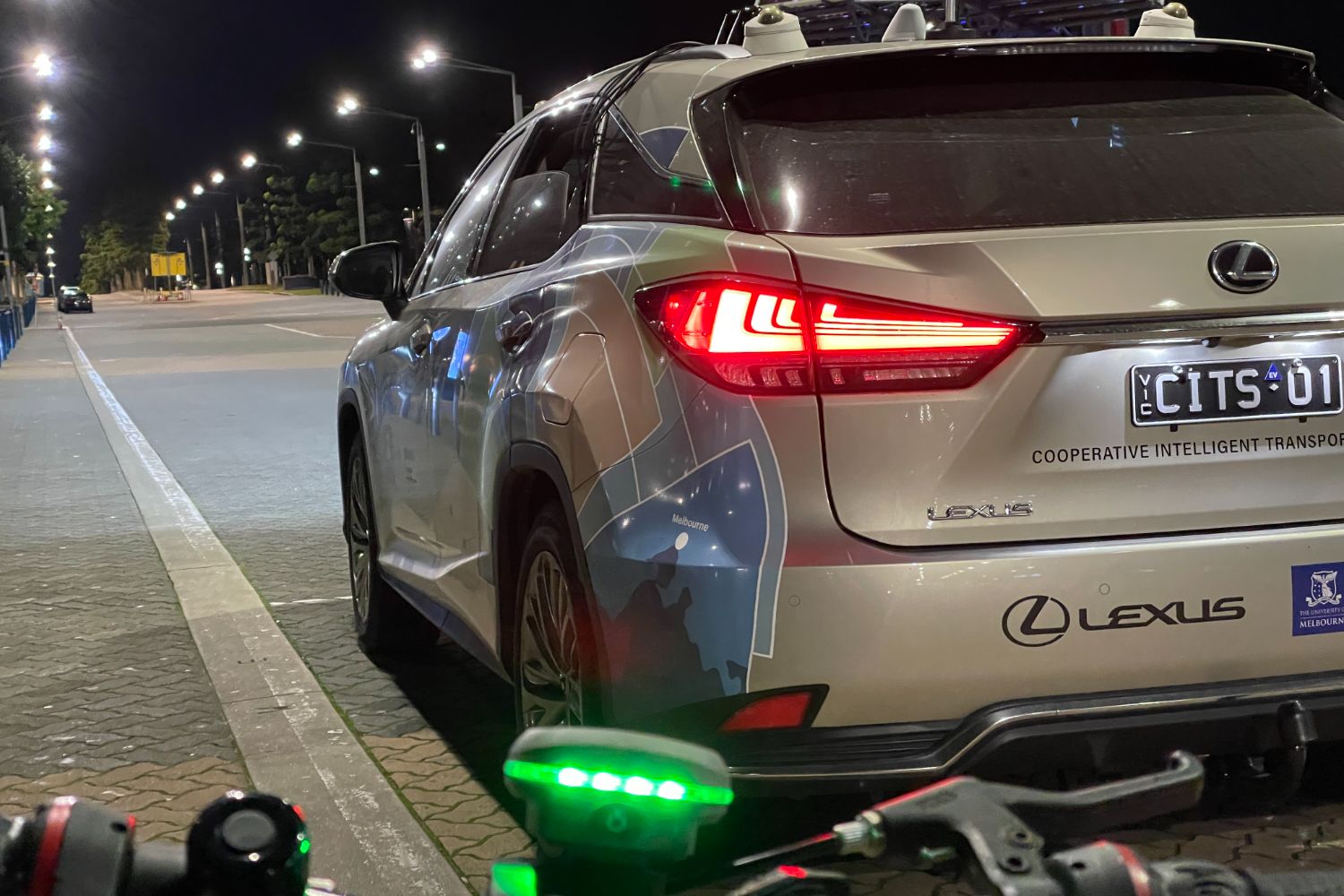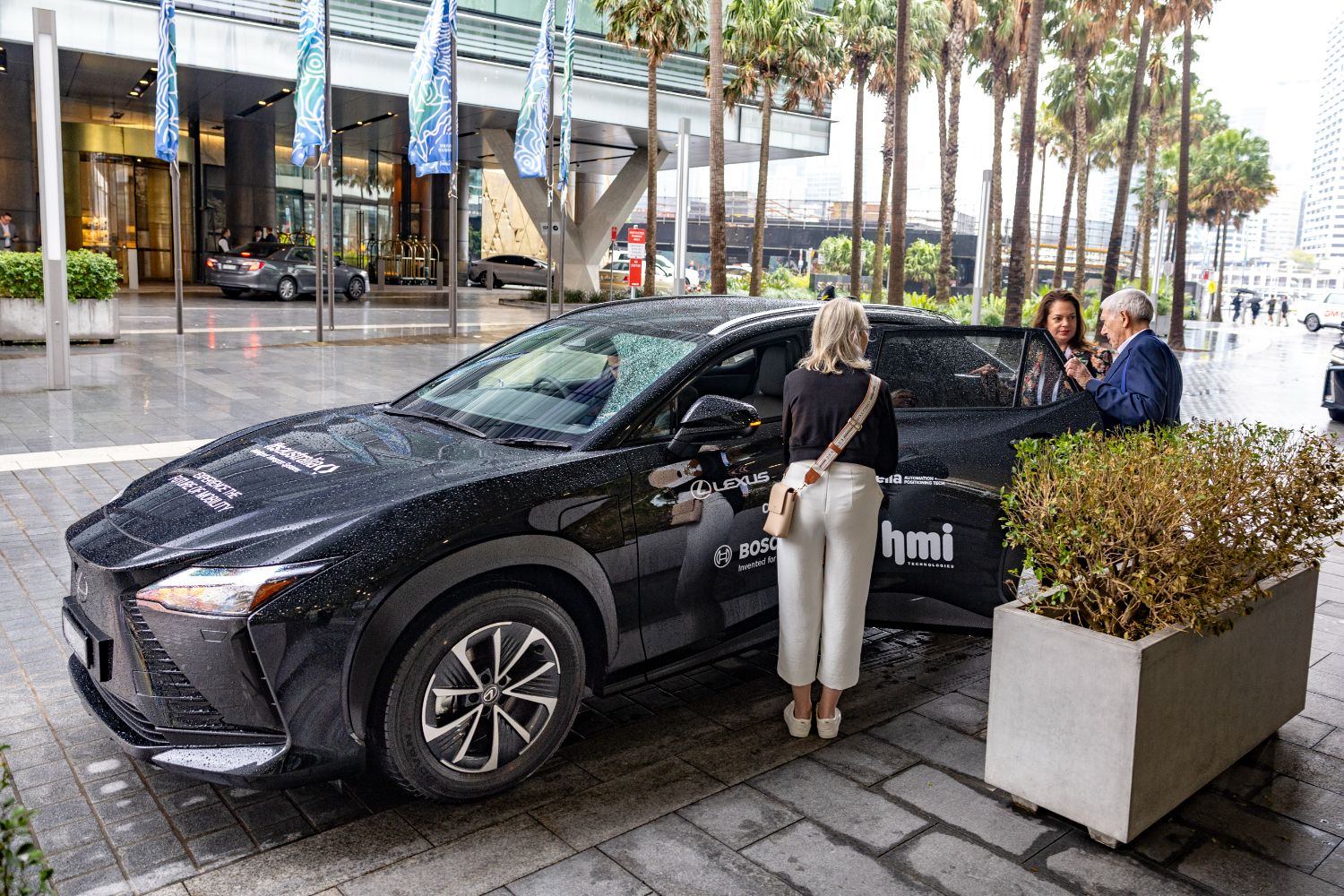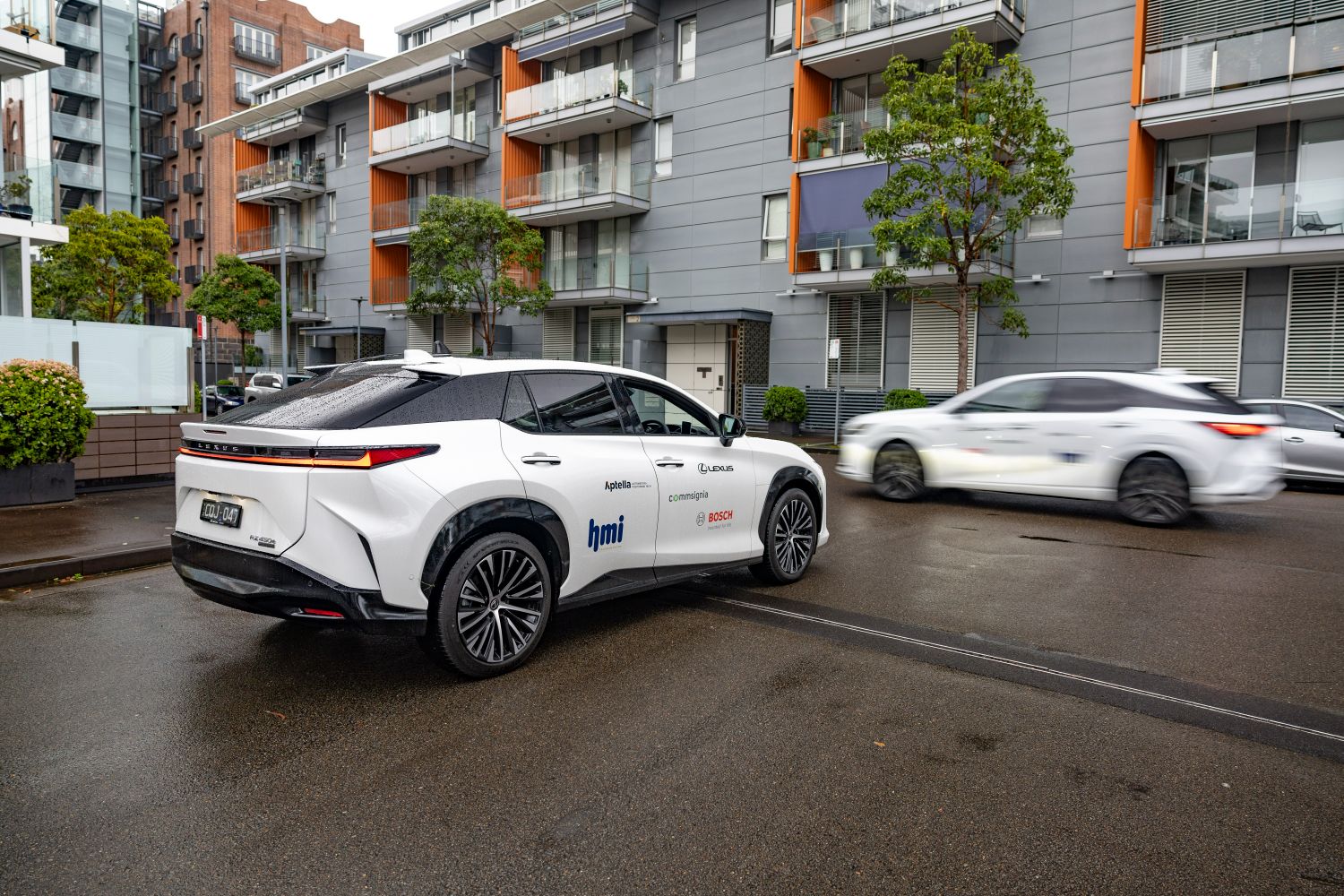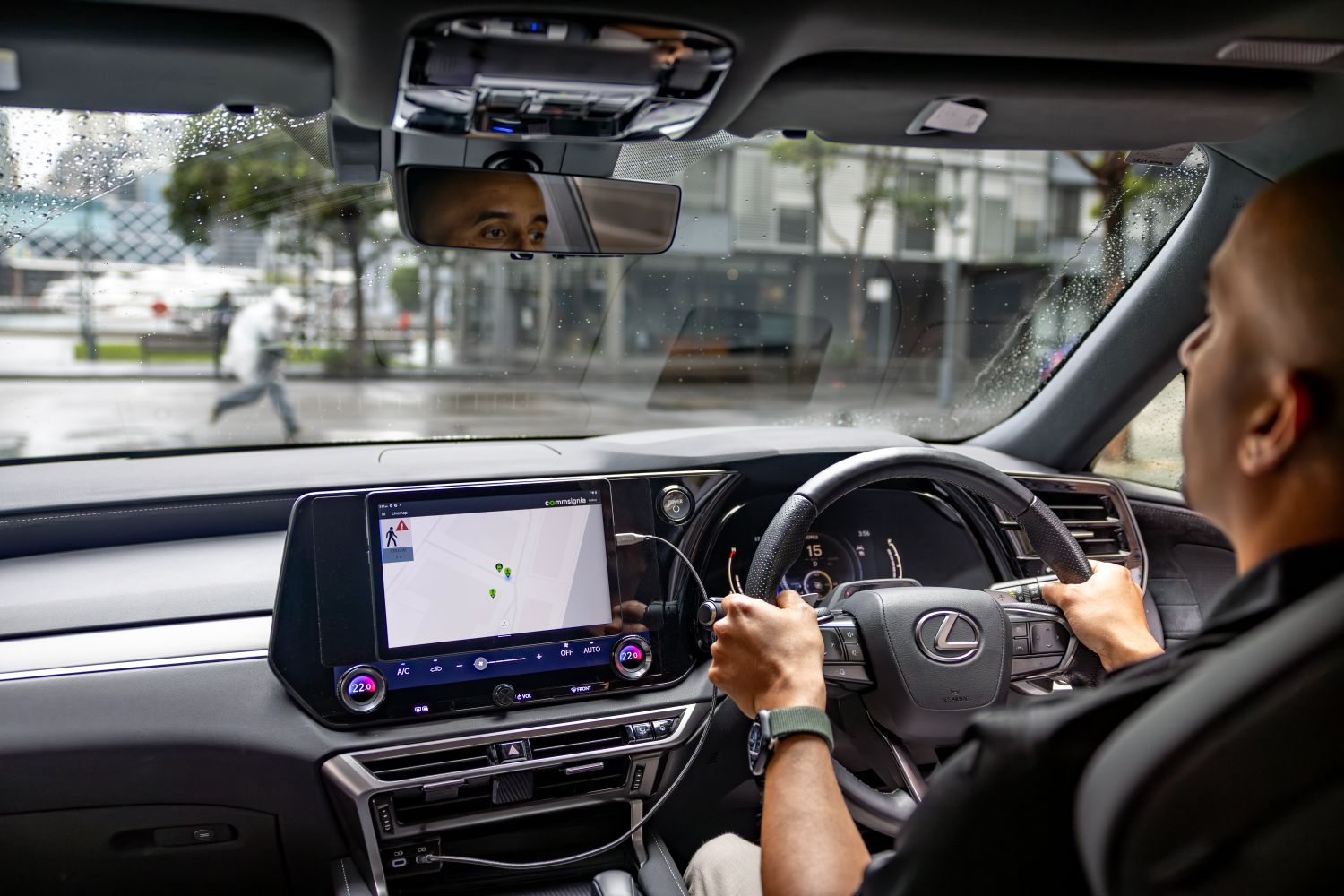Lexus reckons it can leverage the communications technology that currently exists in cars to dramatically improve pedestrian and cyclist safety.
How does that work, then?
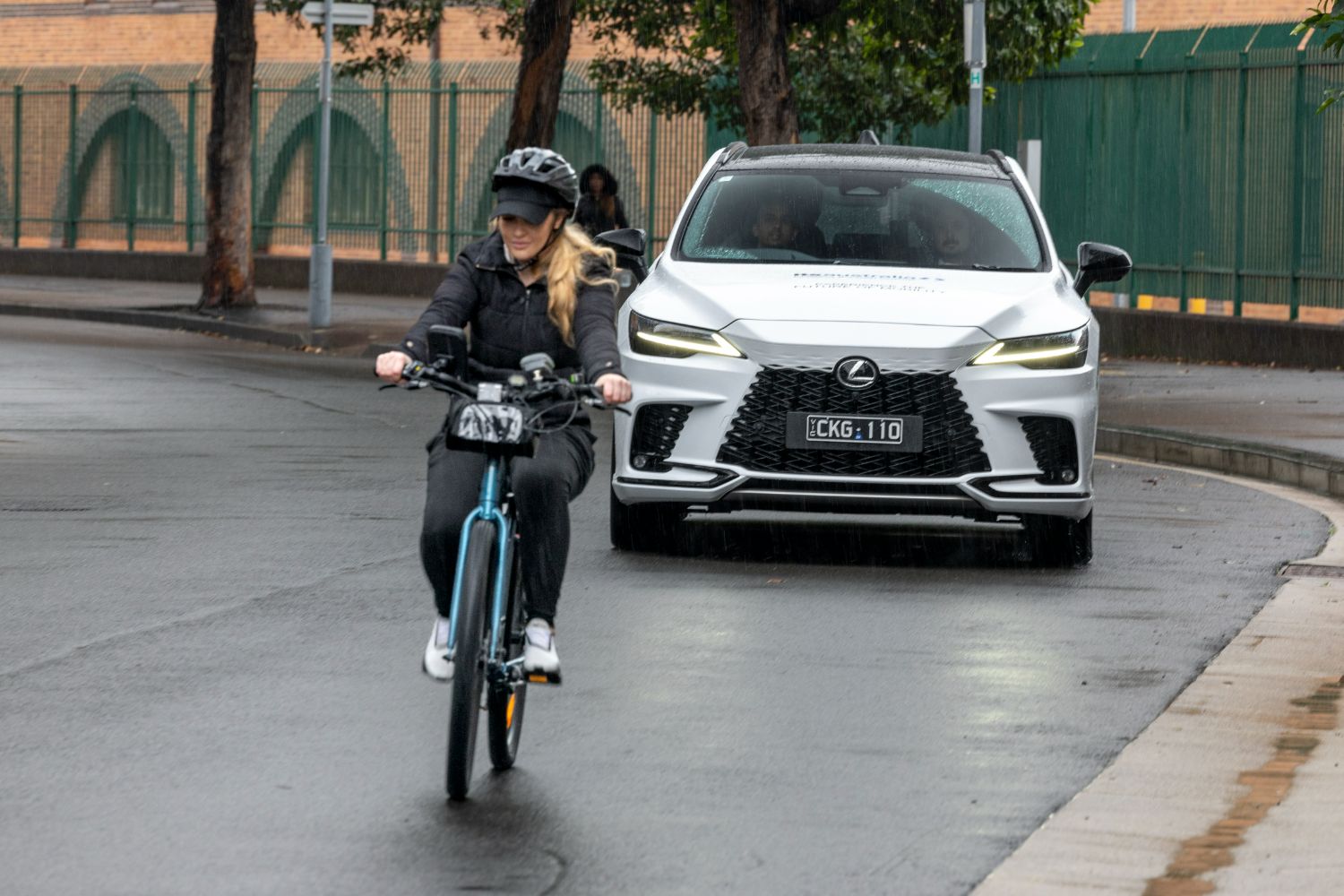
The Japanese luxury brand attended the Intelligent Transport System (ITS) Australia Summit 2024, held in Sydney and brought along three cars - two RZ 350e electric crossovers and an RX 500h hybrid. All three of these cars were fitted wit prototype versions of Lexus’ Cooperative Intelligent Transport Systems, or CITS.
The CITS amplifies the existing technology that allows cars to wirelessly communicate with other vehicles and infrastructure such as traffic lights and other traffic management systems, including live safety warnings. Lexus calls this communication ‘collective perception,’ and it basically turns other cars and street furniture into extra eyes and ears for your own car.
So you can see around corners?
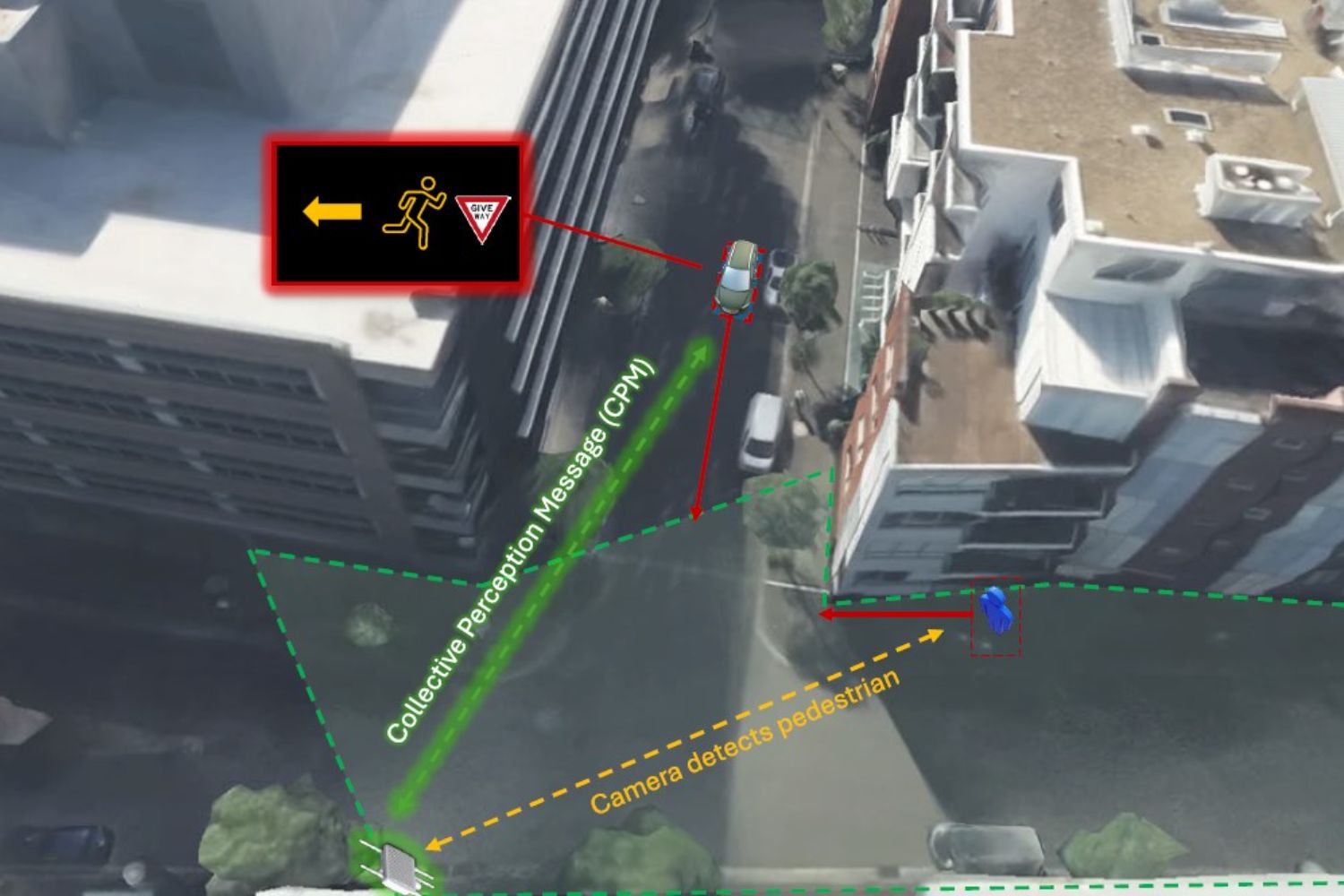
Kind of, yes. According to Lexus: “The infrastructure-to-vehicle application using collective perception, for example, warns drivers of unsighted pedestrians approaching from around a corner, with vehicle-to-vehicle cooperative awareness messages warning drivers of an unsighted vehicle approaching from a perpendicular direction, while a connected bicycle can relay its position to an unsighted vehicle approaching quickly from behind.”
The tech can also warn of other problems ahead, such as road works, traffic jams and accidents. There’s even a function whereby the CITS network can control traffic lights to allow emergency vehicles to pass more quickly and better manage the flow of regular traffic.
In the cabin, the CITS technology can flash visual and audible warnings to a driver to keep them informed of what’s literally about to come around the corner.
’Mobility without trauma’
Lexus Australia Chief Executive John Pappas said learnings from working closely with ITS Australia and key stakeholders contribute towards the ultimate Lexus goal of zero road fatalities.“Mobility without trauma is only achievable by improving road safety for every road user, which means drivers, motorcyclists, bicyclists, scooter riders and pedestrians alike,” Pappas said. “In addition to projecting risk situations in dynamic road conditions to enable proactive responses, intelligent perception technology can also improve traffic flow which reduces fuel consumption and therefore harmful CO2 tailpipe emissions. Lexus has proudly supported ITS Australia since 2018 with our own dedicated team and test vehicles. We will continue to work closely with all government, industry and technology stakeholders to demonstrate how perception technology can enhance social, environmental and economic well-being for all road users.”


